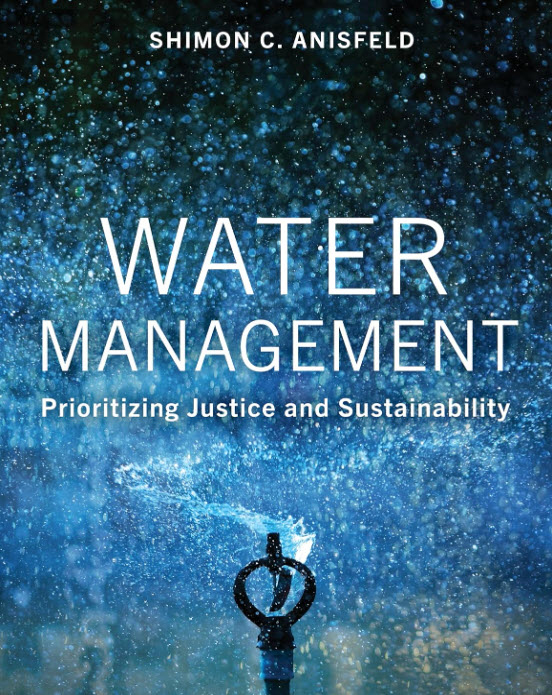Water Management: Prioritizing Justice and Sustainability, by Shimon C. Anisfeld, Ph.D. Washington, D.C.: Island Press, 2024; 440 pages, $50.
“When the well’s dry, we know the worth of water.” –Bejamin Franklin, Poor Richard’s Almanack
Recent years have regularly given us fresh examples and reasons to appreciate not only water’s worth but its power, potential destructive capacity, and its fragility as the indispensable resource for humans and indeed all life on Earth.
Author and Yale research scientist Shimon C. Anisfeld, Ph.D., explains that while the various water problems across the globe are diverse – from flooding to drought, fish kills to contaminated drinking water, and escalating conflicts over dams and access to water – they are related. This is the reason that his book, Water Management, aims its lens and puts its arms around all of them.
Further reading:
- Book highlights efforts to solve global water-access challenges
- Author explores how recycling sewage helps solve water woes
- Book examines efforts to tame America’s waterways
“These water ‘hot spots,’” Anisfeld writes, “are manifestations of serious underlying stresses on our interconnected social-physical water systems.” And crucially, he notes, they require “sustained attention” from experts and the public – not just during and immediately after catastrophes.
Anisfeld, who is also a senior lecturer in water resources and environmental chemistry, notes that the book was designed primarily with undergraduate and graduate students in water management in mind. However, he notes that practicing water professionals will also find it a helpful resource and that laypeople interested in learning more will also find it rewarding.
Water Management’s broad “survey” coverage of many topics gives it a deliberate modularity, particularly helpful for nonstudents who would like a reference they can dip into on specific topics without plowing through the book’s full 400-plus-page heft.
After a trenchant introduction of fewer than 20 pages clarifies the overall stakes – and the book’s themes – the book’s first part tackles water availability and use. Topics here span water supply and demand, basic scientific definitions and explanations, the effects of land-use changes, and the history of human water use (on which there is a 20-page primer). This section of the book concludes with an examination of water scarcity indicators and some of the key mechanisms at play, such as surface water depletion and groundwater pumping.
 Island Press
Island Press
With the deep dive of part 1 concluded, Water Management proceeds into three additional sections devoted to more specific aspects affecting the water crisis. These cover, in turn, river and ecosystem management; water governance; and urban, industrial, and agricultural uses. Individual chapters within these sections are also meant to work in stand-alone fashion for those looking to target their reading, and glossaries, chapter highlights, and case studies offer additional tools. Finally, Anisfeld notes that the book assumes some understanding of the hydrologic cycle; the book therefore has a companion “introduction to water science” website to bring others up to speed.
For all the book’s useful, compartmentalized approach to its subject, however, there is power in the synthesis of its parts. With a direct and plainspoken but highly detailed prose style, Water Management’s information-to-word ratio is very high.
It also neatly manages to present and discuss in great detail complex, highly charged issues that have moral, economic, and local and geopolitical dimensions (and often life-and-death consequences) without lecturing or coming across as a treatise. It is, instead, an authoritative work of scholarly vigor that we must hope is widely read, absorbed, and incorporated into decision-making at local, national, and global levels. Like water itself, the worth of Water Management is very high.



